Wind Energy and the Environment
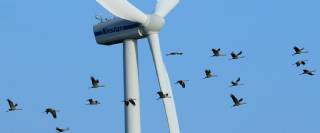
Wind Energy and the Environment
In this section, both the positive and negative aspects of wind energy will be discussed.
Positive environmental benefits of Wind energy
It must be stressed that wind energy involves no combustion or nuclear reaction, so it is pollution free. It is renewable and plentiful and free, and what is more it is available everywhere, especially in remote areas and often it is windier in mountains and near costal areas. There are significant environmental benefits obtained from using a renewable energy device attributed to preventing the release of Green house gases associated with fossil fuels. The general equation for estimating the reduction in emitted gas is:Gas-emission reduction (in tonnes) = A x 0.8 x h x kG
Where
A is the rated capacity of the development in kW
h is the number of operational hours per year, = 8000 h
kG is the specific emitted gas constant.
Hence the following equations are used to predict environmental benefits from based on 1 kWe system:
CO2 emission reduction (in tonnes) = 1x0.8x8000x862/106
= 5.5
SO2 emission reduction (in tonnes) = 1x0.8x8000x9.9/106
= 0.063
NO2 emission reduction (in tonnes) = 1x0.8x8000x862/106
= 0.018
Negative Impacts of Wind energy
These issues are often raised, some are valid, some are opinion driven, and others could be due to personal preferences or biasness.
Noise
Wind turbines rely on the movement of the rotor affected by wind to rotate the generator and make electricity. Virtually everything with moving parts will make some sound, and wind turbines are no exception. Turbines are an established and well developed technology, and well designed wind turbines are generally quiet in operation, and compared to the noise of road traffic, trains, aircraft and construction activities, the noise from wind turbines is relatively low. Outside the nearest houses, which are at least half a mile away, and more often further, the sound of a wind turbine generating electricity is likely to be about the same level as noise of leaves rustling in a gentle breeze. This is similar to the sound level inside a typical living room with a gas fire switched on, or the reading room of a library or in an unoccupied, quiet, air-conditioned office.
Bird-kill
This is a very emotionally charged subject. Bird conservationists tend to view wind turbines as death machines and refer to bloody bird corpses lying at the foot of turbine towers and entire species migrating from the areas surrounding wind farms.
Birds occasionally collide with wind turbines, as they do with other tall structures such as buildings. Detailed studies and monitoring following construction, at wind development areas indicate that this is a site-specific issue that will not be a problem at most potential wind sites. Also, wind's overall impact on birds is low compared with other human-related sources of avian mortality.
Visual impacts
Wind turbines are just normal structures to look at, just like trees, better looking than boiler chimneys. In comparison to other energy developments, such as nuclear, coal and gas power stations or open cast coal mining, wind farms have relatively little visual impact. Wind farm developers recognise that visual impact can be a concern for neighbouring communities. Considerable effort is therefore committed to the planning stages in order to reduce the impact and gain their consent.
Shadow Flicker
is occasionally raised as an issue by some people. A wind turbine's moving blades can cast a moving shadow on a nearby residence, depending on the time of the year (which determines how low the sun is in the sky) and time of day. It is possible to calculate very precisely whether a flickering shadow will in fact fall on a given location near a wind farm, and how many hours in a year it will do so. Therefore, it should be easy to determine whether this is a potential problem.
Communication interference
Wind turbines, like all structures, can interfere with communication or radar signals when these signals are interrupted by the turbine structure or the rotor plane. Wind turbines can sometimes cause electromagnetic interference affecting TV and radio reception. Electromagnetic interference can be caused by near-field effects, diffraction, or reflection and scattering. Such interference can typically be mitigated by using satellite TV or wireless cable TV.
A number of tools and practices are available to manage or mitigate the potential impact of wind turbine interference:
-Farm layout optimization, terrain masking, or reduction of the radar cross-section area may be sufficient to address identified interference problems.
-Coating equipment with absorbent or reflective materials to minimize the turbine's radar signature.
Labels
wind generatorresidential wind turbinewind powervertical wind turbinemicro wind turbinewind energy prosdiy wind turbineenvironmental impact of wind energywind energy informationwind energy jobswind energy in the futurewind energy generationwind energy efficiencyFarming Principle: Deep Soil Preparation
Looking at GB as a three-legged stool, deep soil preparation is one of the legs. Deep soil preparation builds soil and soil structure by loosening the soil to a depth of 24 inches (60 cm). Ideal soil structure has both pore space for air and water to move freely and soil particles that hold together nicely.

Smart Home Ecosystem - Smart Home Automation - Smart Home Security - Smart Home Technology
The outer-most level corresponds to the individual devices and sensors that consumers interact with. Several candidates are vying for the role of a leader introducing smart home services to the mass market.

Solar Energy Systems - Solar Modules - Solar Electric System Design - Solar Power
The heart of a photovoltaic system is the solar module. Many photovoltaic cells are wired together by the manufacturer to produce a solar module. When installed at a site, solar modules are wired together in series to form strings. Strings of modules are connected in parallel to form an array.
Solar Energy Systems - Array Mounting Racks - Solar Ray - Solar Panel - PV Racks and Mounts
Arrays are most commonly mounted on roofs or on steel poles set in concrete. In certain applications, they may be mounted at ground level or on building walls. Solar modules can also be mounted to serve as part or all of a shade structure such as a patio cover. On roof-mounted systems, the PV array is typically mounted on fixed racks, parallel to t

Solar Energy Systems - Grounding Equipment
Grounding equipment provides a well-defined, low-resistance path from your system to the ground to protect your system from current surges from lightning strikes or equipment malfunctions. Grounding also stabilizes voltages and provides a common reference point. The grounding harness is usually located on the roof.
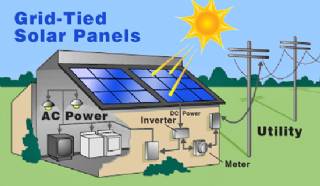
Solar Energy Systems - Solar Inverter - Solar Panel Inverter
Most grid-connected inverters can be installed outdoors, while most off-grid inverters are not weatherproof. There are essentially two types of grid-interactive inverters: those designed for use with batteries and those designed for a system without batteries.
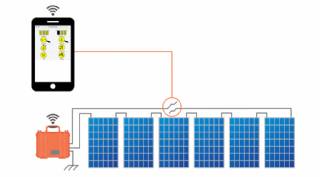
Solar Energy Systems - Solar Disconnects
Automatic and manual safety disconnects protect the wiring and components from power surges and other equipment malfunctions. They also ensure the system can be safely shut down and system components can be removed for maintenance and repair.
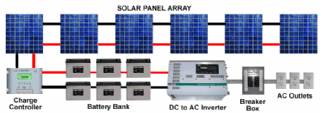
Solar Energy Systems - Solar Battery Bank
Batteries store direct current electrical energy for later use. This energy storage comes at a cost, however, since batteries reduce the efficiency and output of the PV system, typically by about 10 percent for lead-acid batteries. Batteries also increase the complexity and cost of the system.

Solar Energy Systems - Solar Charge Controller
A charge controller, sometimes referred to as a photovoltaic controller or battery charger, is only necessary in systems with battery back-up. The primary function of a charge controller is to prevent overcharging of the batteries. Most also include a lowvoltage disconnect that prevents over-discharging batteries. In addition, charge controllers pr
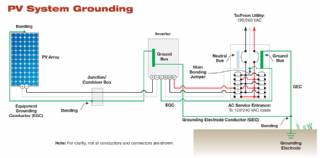
Solar Energy Systems - The NEC and PV Systems
Solar PV systems must be installed in accordance with Article 690 of the National Electric Code, which specifically deals with PV systems, as well as several other articles of the NEC that pertain to electrical systems in general. When there is a conflict between NEC 690 and any other article, NEC 690 takes precedence due to the unique nature of PV